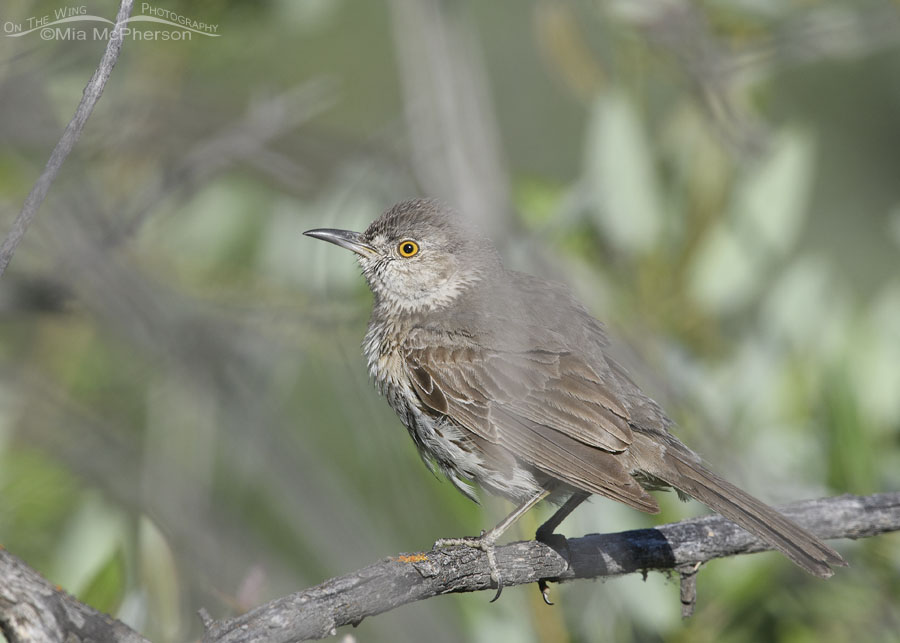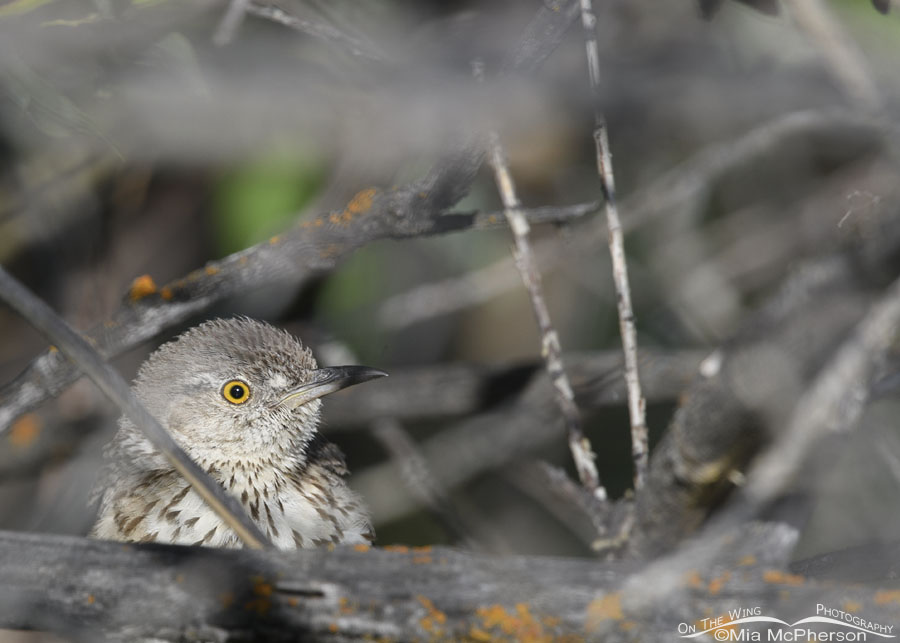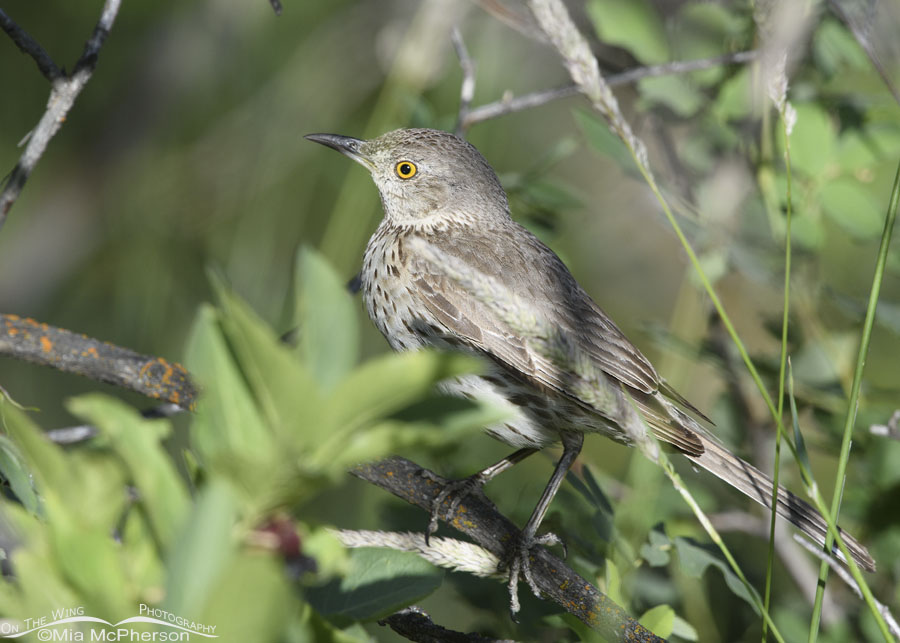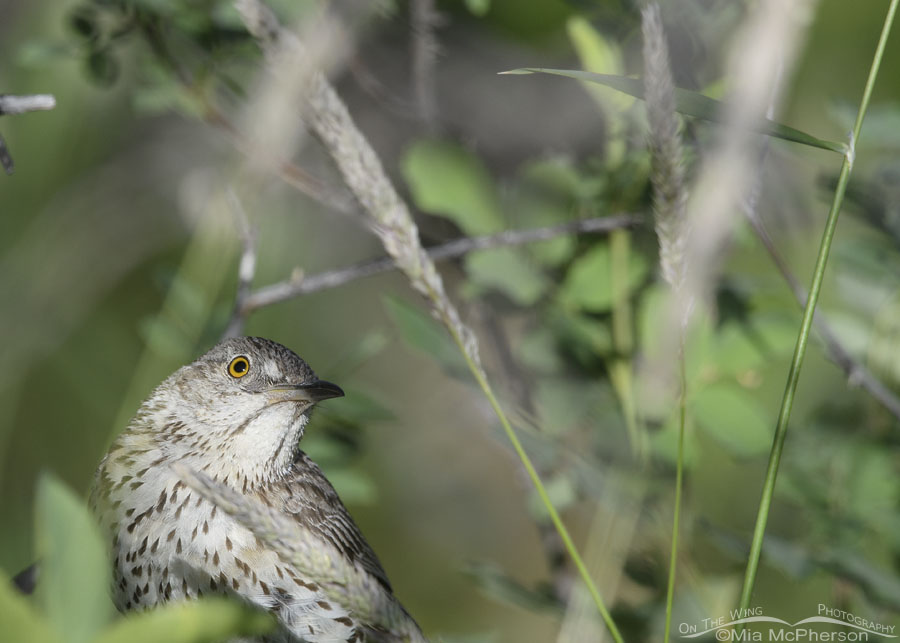 Sage Thrasher in riparian habitat – Nikon D500, f7.1, 1/1250, ISO 500, Nikkor 500mm VR with 1.4x TC, natural light
Sage Thrasher in riparian habitat – Nikon D500, f7.1, 1/1250, ISO 500, Nikkor 500mm VR with 1.4x TC, natural light
Towards the end of last month I found a Sage Thrasher high in the mountains in riparian habitat which surprised me. A lot.
Why? Because riparian habitat that high in the mountains isn’t where I would expect to find a Sage Thrasher. At all. My jaw probably dropped but I was too busy taking these images to notice.
The elevation wasn’t surprising since I am aware that Sage Thrashers, also called Mountain Mockingbirds, can be found up to 10,000 feet in their preferred habitat. Finding a Sage Thrasher nearly hidden in a lush willow thicket at the edge of an alpine creek was a surprise.
 Sage Thrasher peeking out of a willow thicket – Nikon D500, f7.1, 1/1000, ISO 500, Nikkor 500mm VR with 1.4x TC, natural light
Sage Thrasher peeking out of a willow thicket – Nikon D500, f7.1, 1/1000, ISO 500, Nikkor 500mm VR with 1.4x TC, natural light
I typically find Sage Thrashers in northern Utah where they breed which is on sagebrush steppes. These thrashers are seen most often in desert habitats on sagebrush, rabbitbrush, rocks and greasewood.
 Adult Sage Thrasher in a riparian zone – Nikon D500, f7.1, 1/1000, ISO 500, Nikkor 500mm VR with 1.4x TC, natural light
Adult Sage Thrasher in a riparian zone – Nikon D500, f7.1, 1/1000, ISO 500, Nikkor 500mm VR with 1.4x TC, natural light
Not one of these Sage Thrasher photos will make it into my photo galleries because I never had a clear view of it in the willow thicket or in amongst the green leaves of the honeysuckle. The setting was messy but maybe more importantly it was unusual for this species of bird.
Spotting this Sage Thrasher in the alpine riparian zone made me wonder if I will be finding and seeing more birds in unusual habitats in response to the effects of climate change.
 Sage Thrasher in Black Twinberry Honeysuckle – Nikon D500, f7.1, 1/1000, ISO 500, Nikkor 500mm VR with 1.4x TC, natural light
Sage Thrasher in Black Twinberry Honeysuckle – Nikon D500, f7.1, 1/1000, ISO 500, Nikkor 500mm VR with 1.4x TC, natural light
If I had found this Sage Thrasher during spring or fall migration I wouldn’t have been so puzzled by seeing it where I did. Finding birds in unusual habitats during migration isn’t all that uncommon. But I didn’t find this adult Sage Thrasher during either migration period.
I have more questions than answers as to why this Sage Thrasher showed up where it did when I photographed it.
Finding and photographing this adult Sage Thrasher next to an alpine creek in a willow thicket was a unique experience for me that I wanted to share.
Life is good.
Mia
Click here to see more of my Sage Thrasher photos plus facts and information about this species.


Very interesting commentary to go along with these fascinating pics. The eye contact is extraordinary. Thanks Mia.
I strongly suspect that climate change is the answer – but am glad to see that this bird appears to be coping well.
Maybe need a folder of unusual sightings possibly due to climate changes.